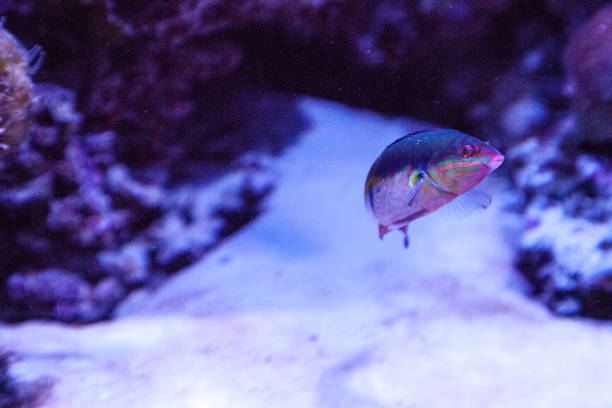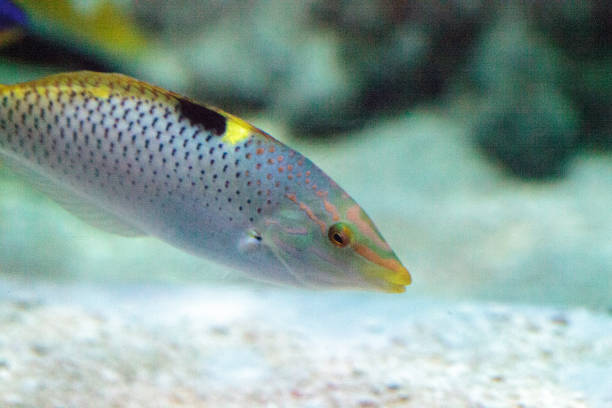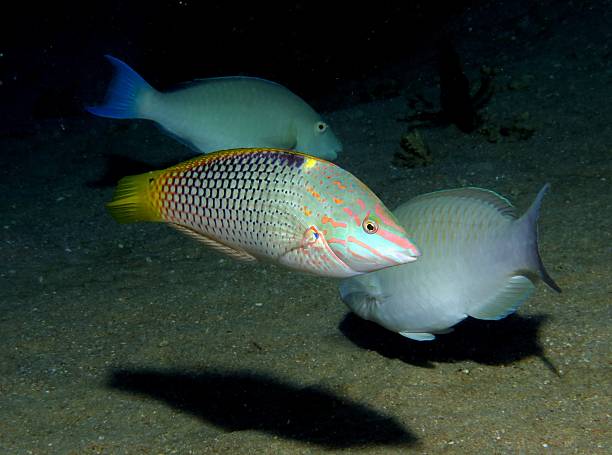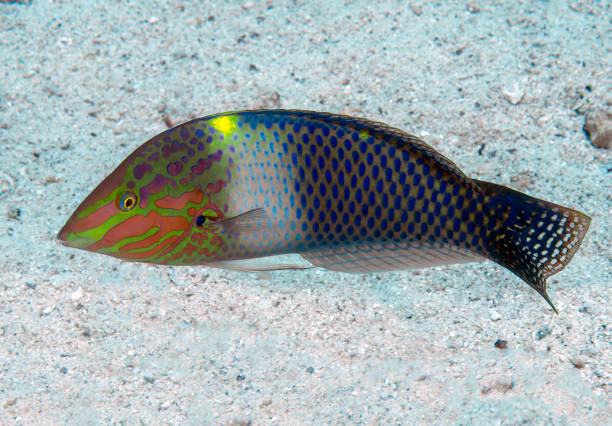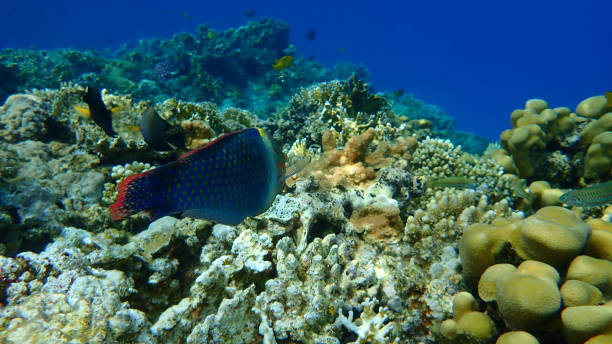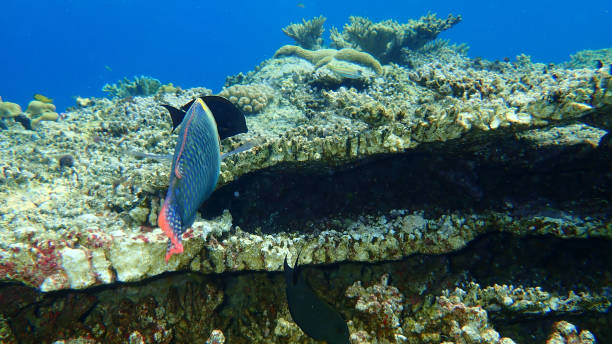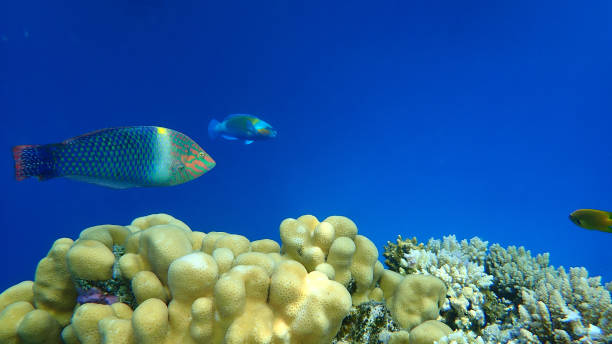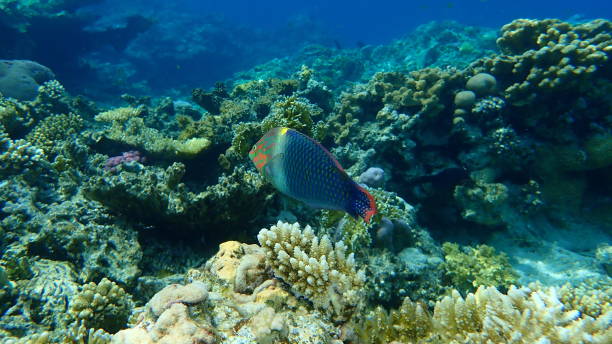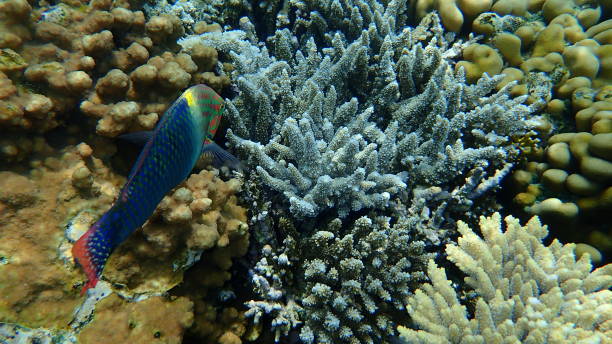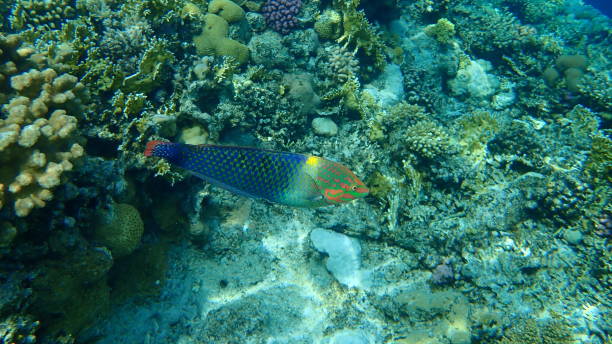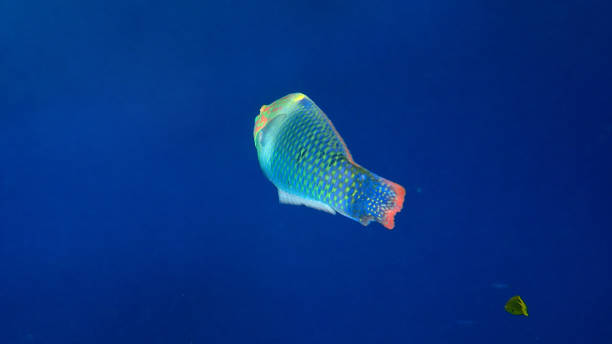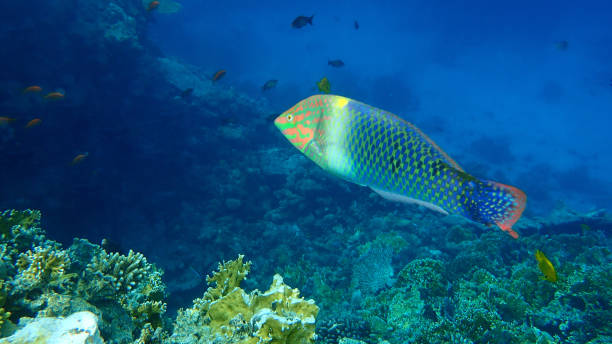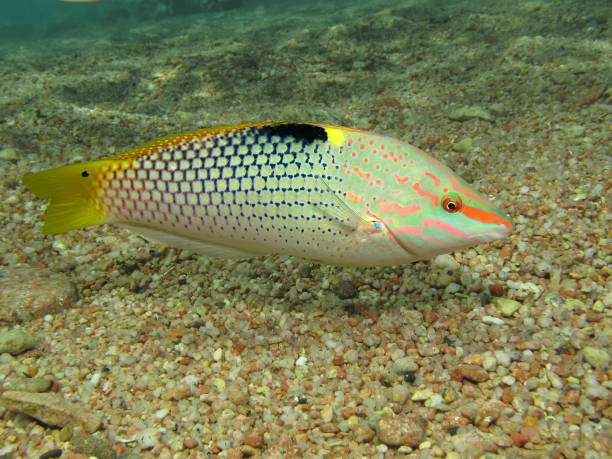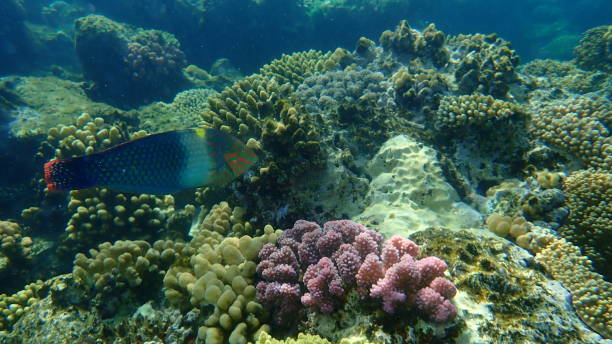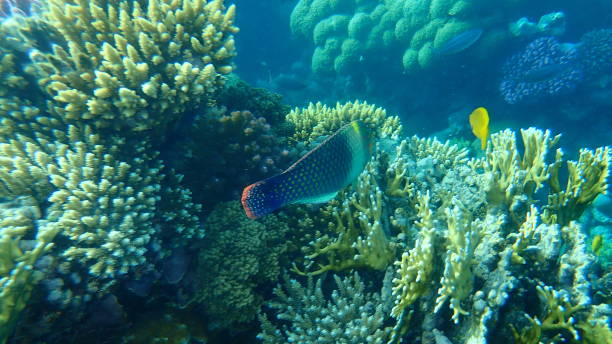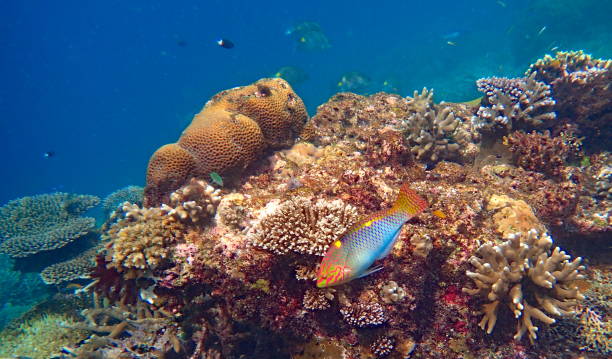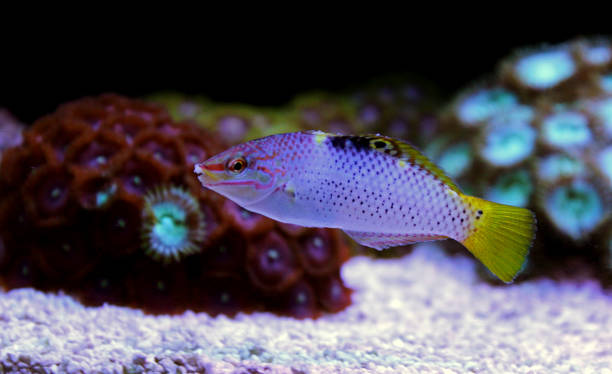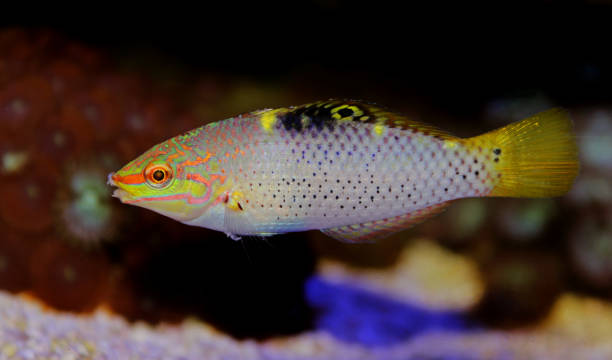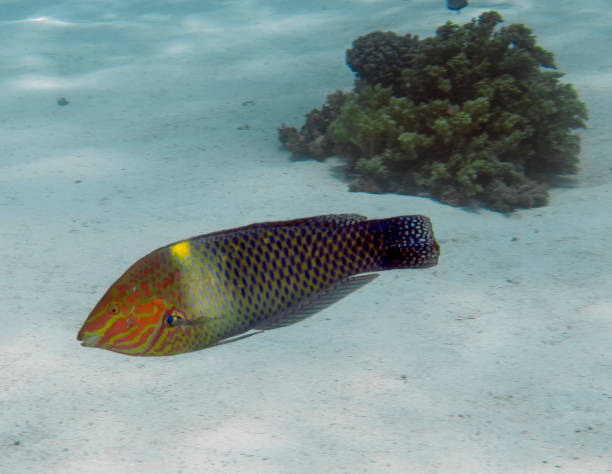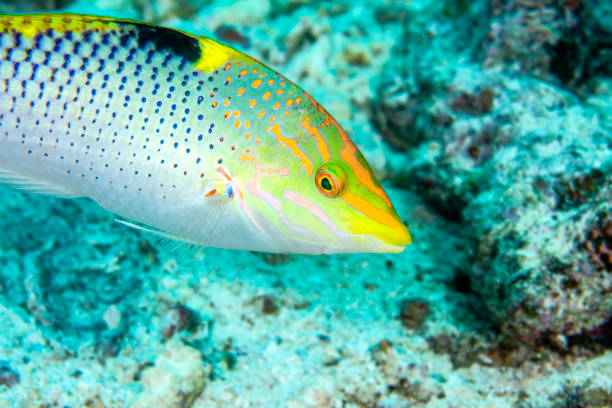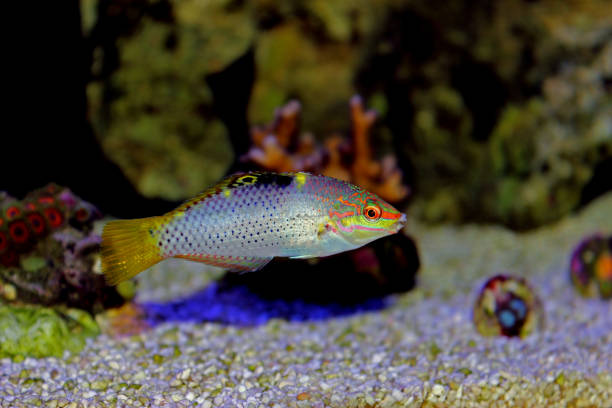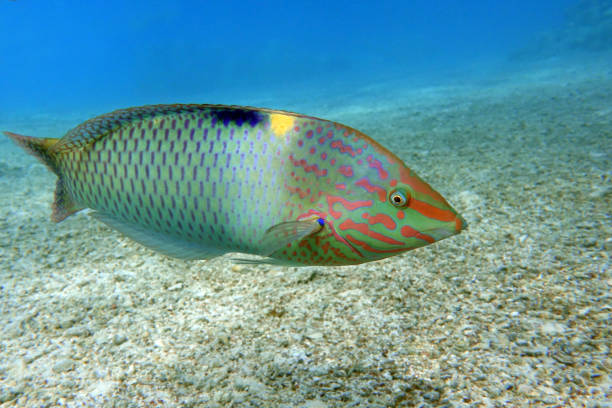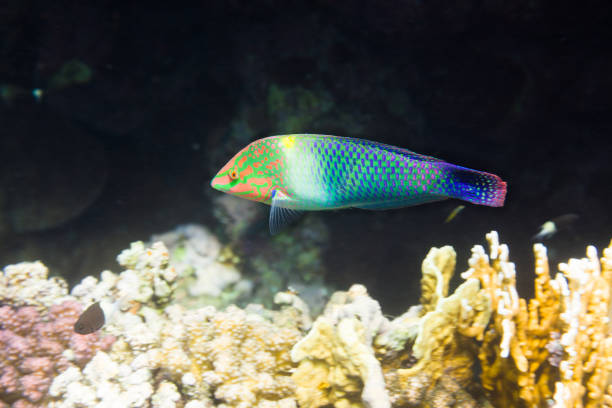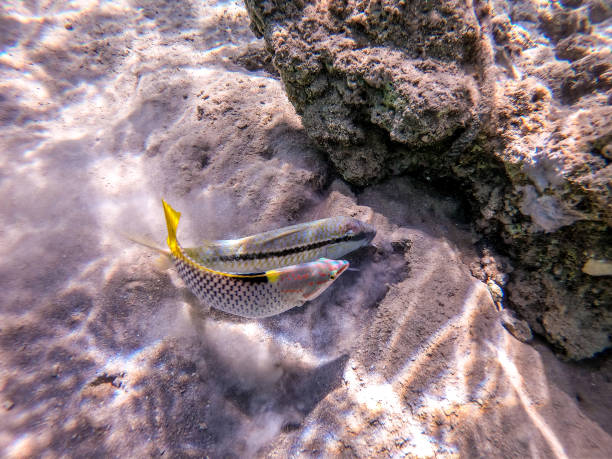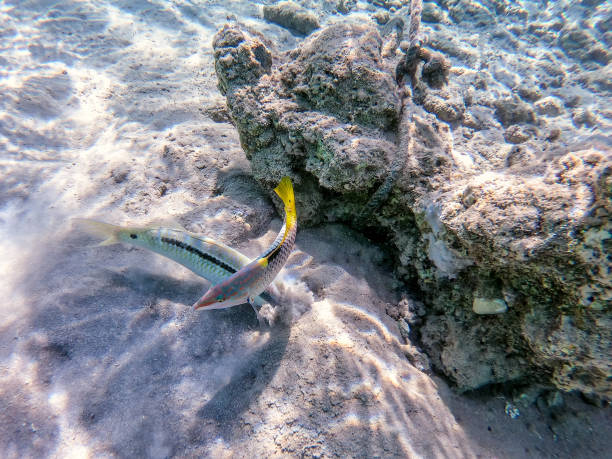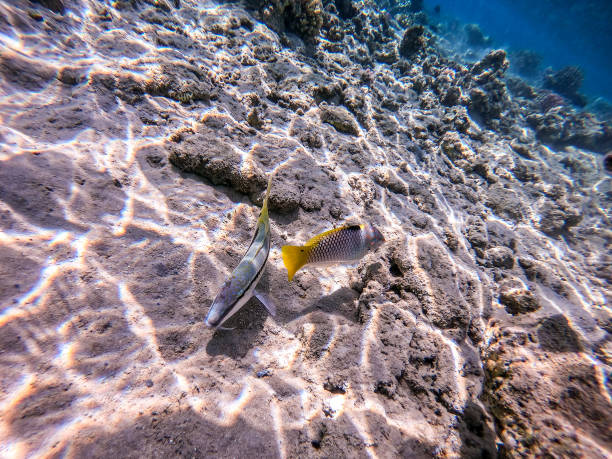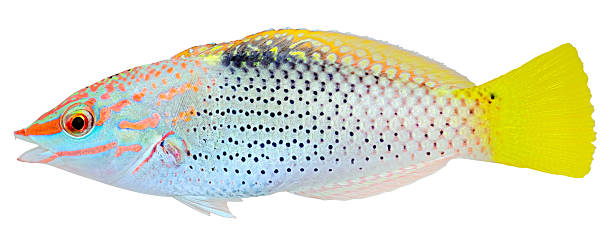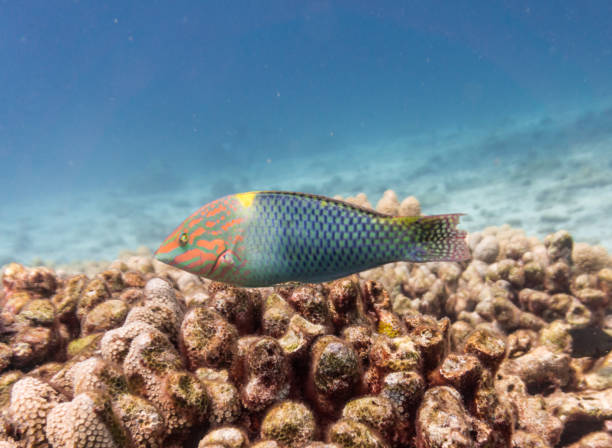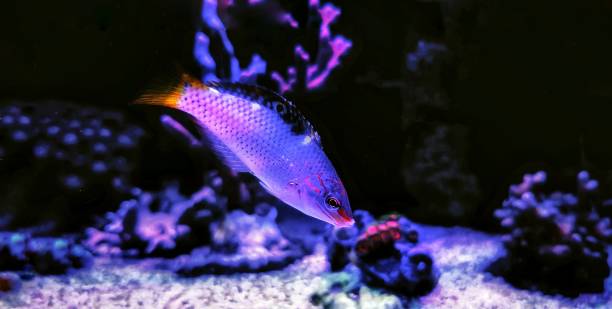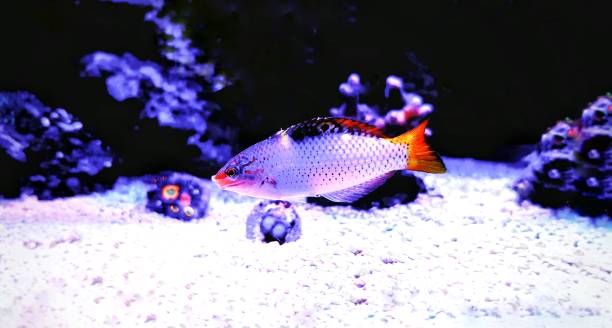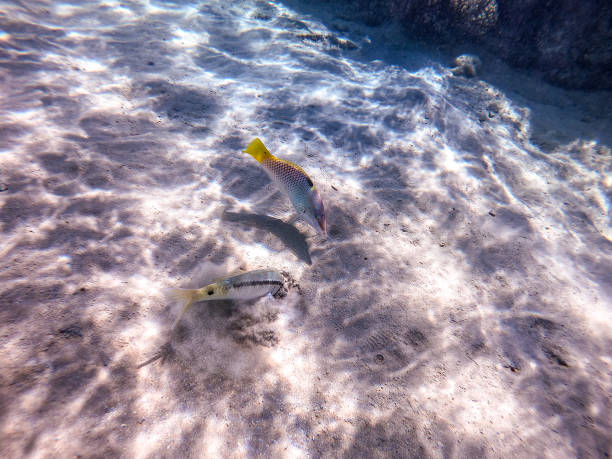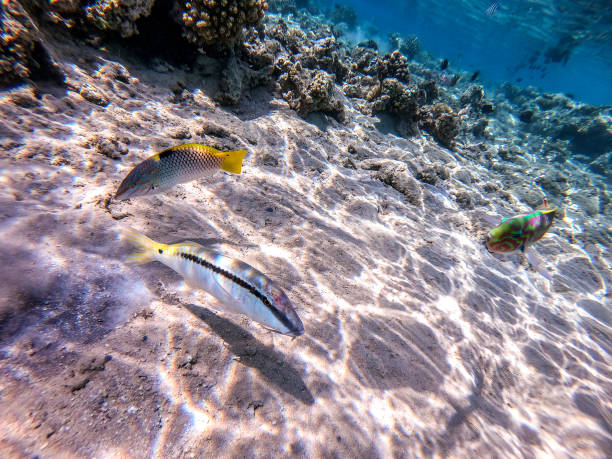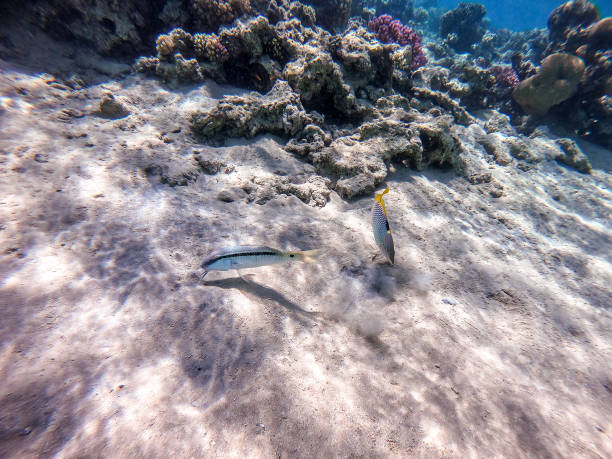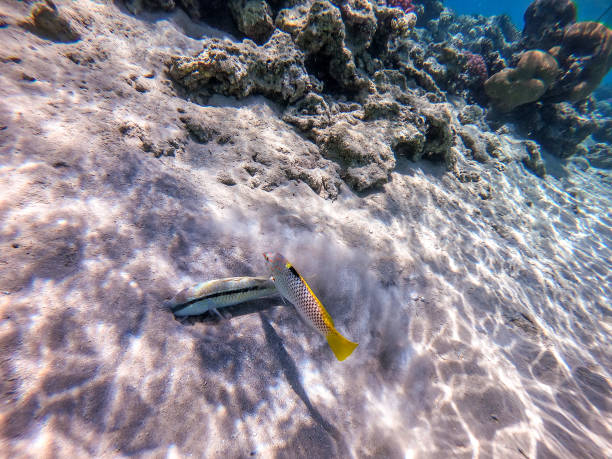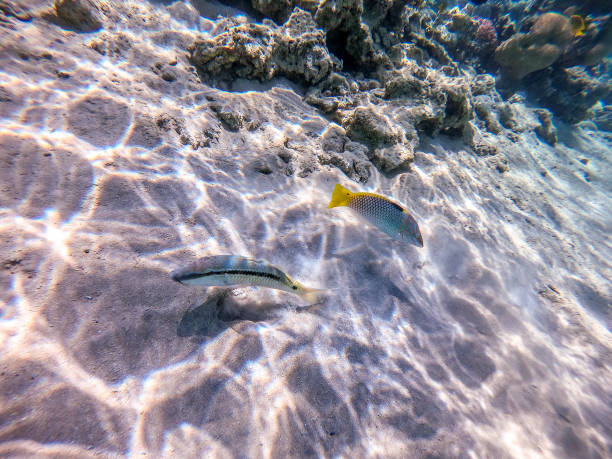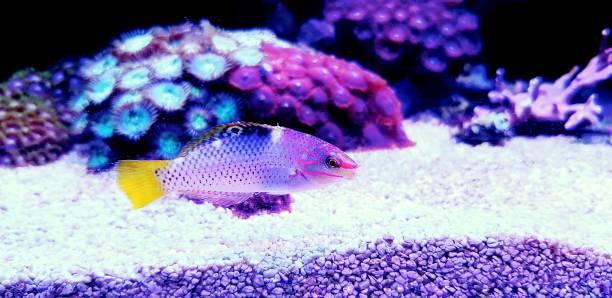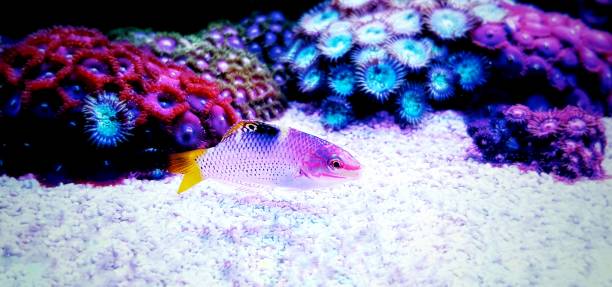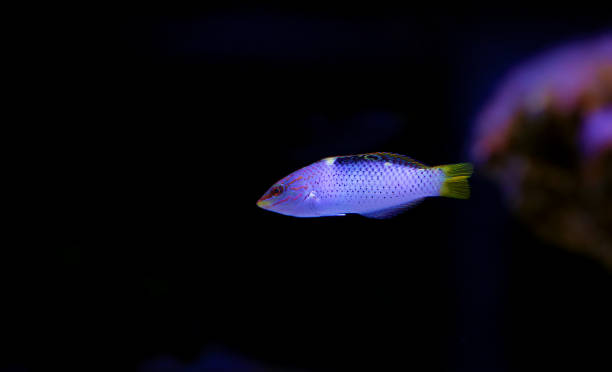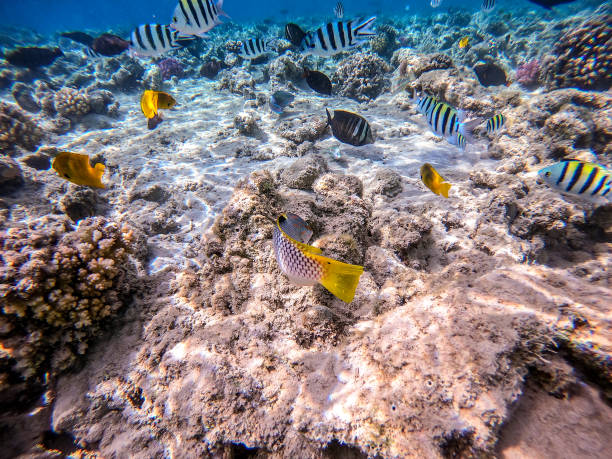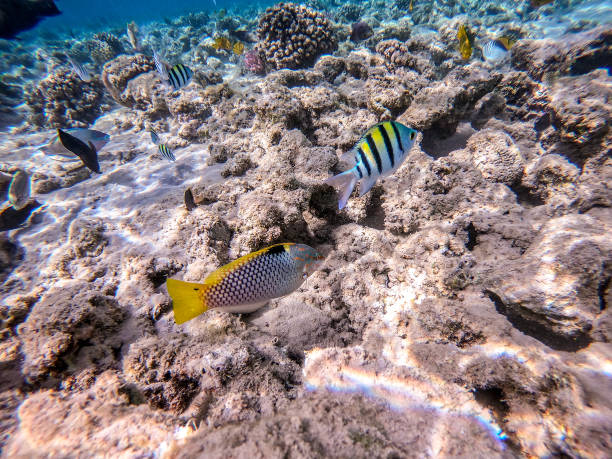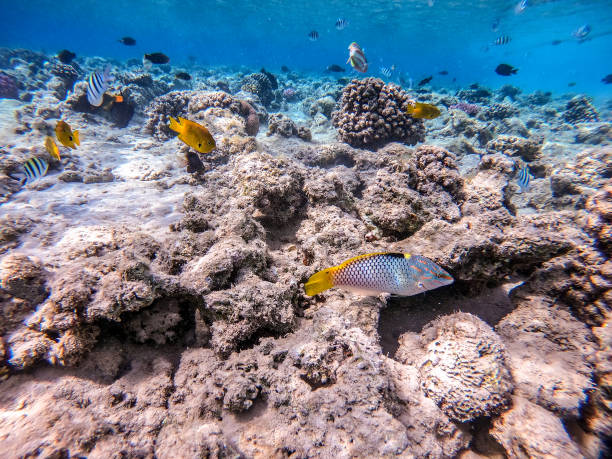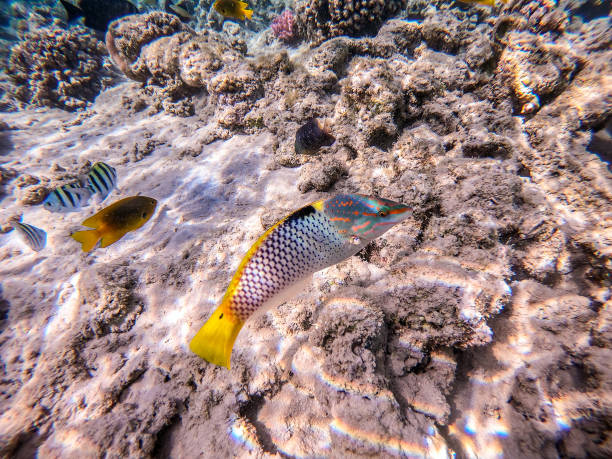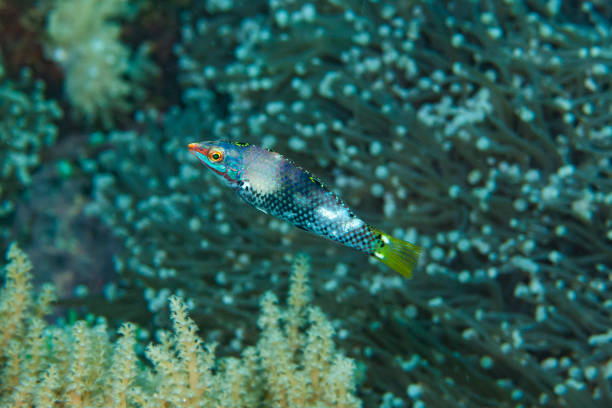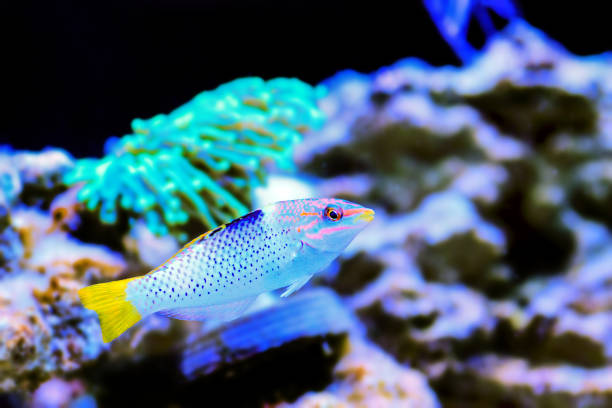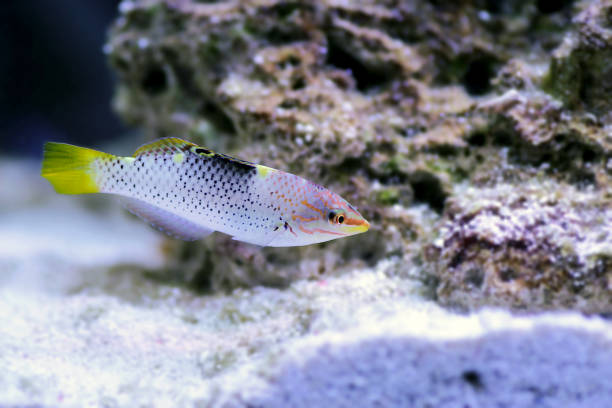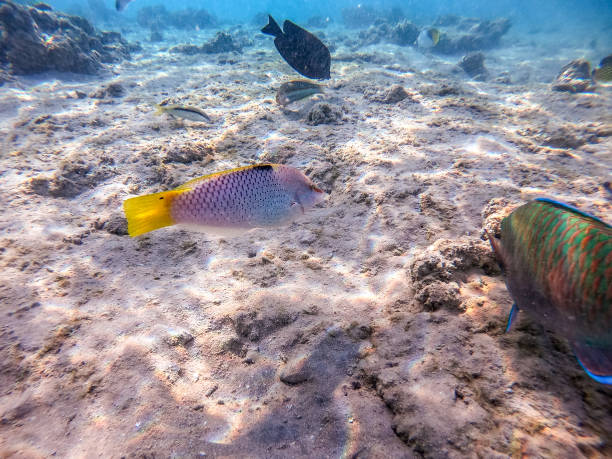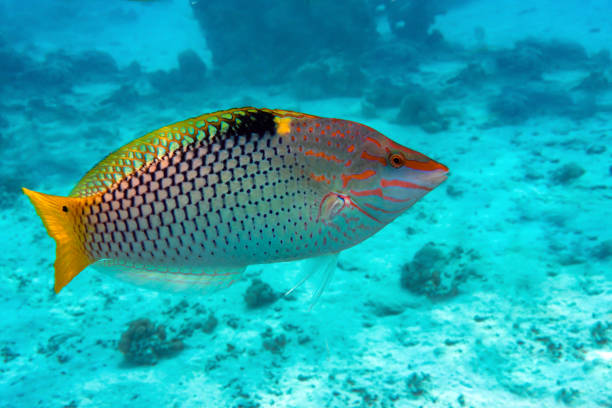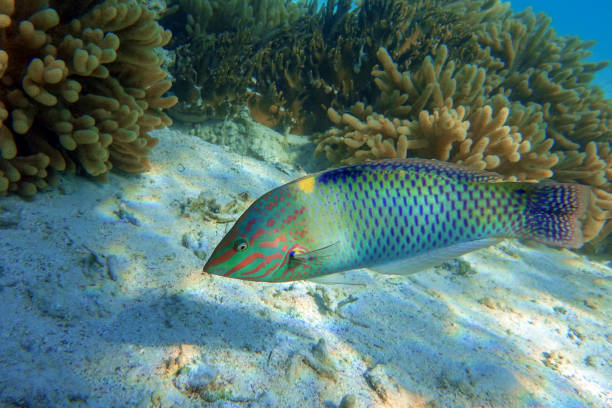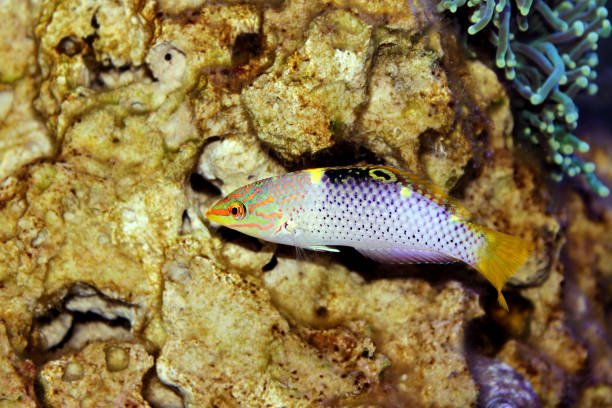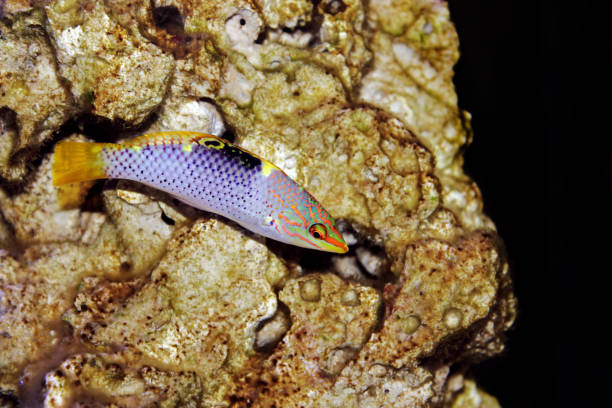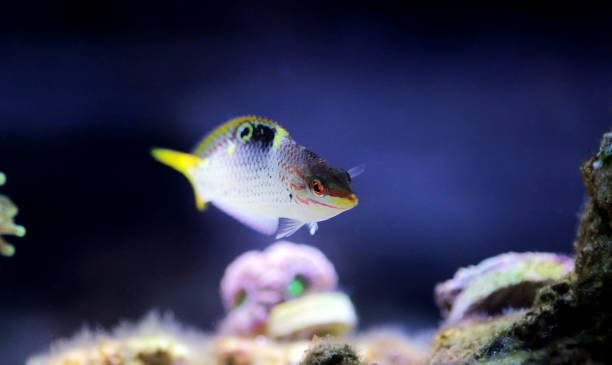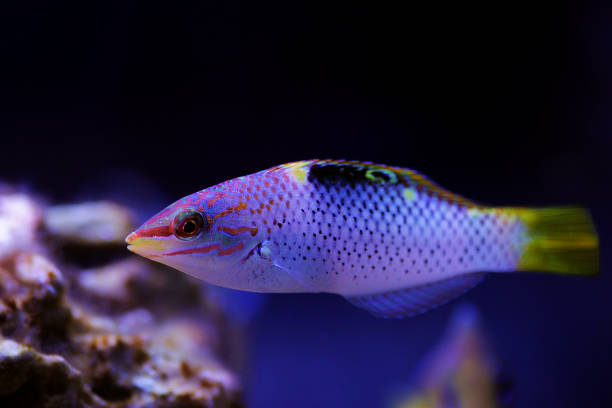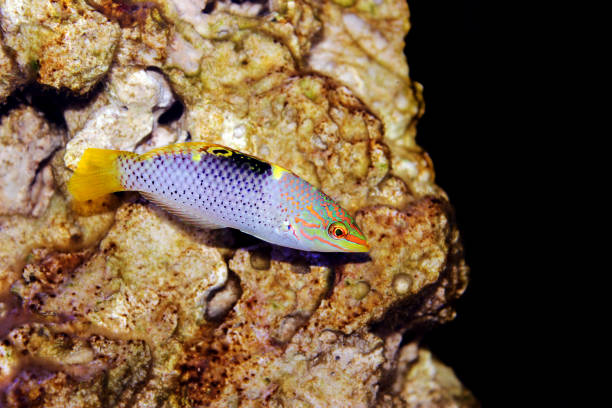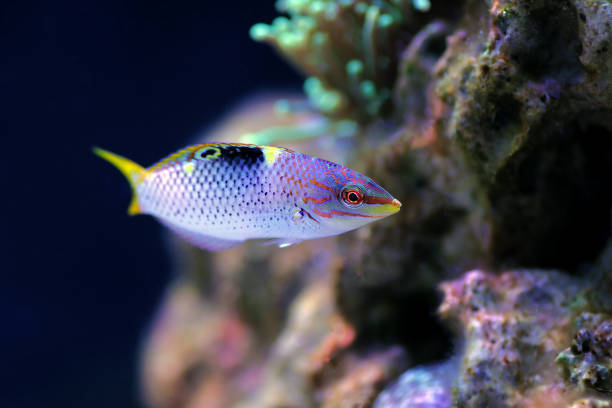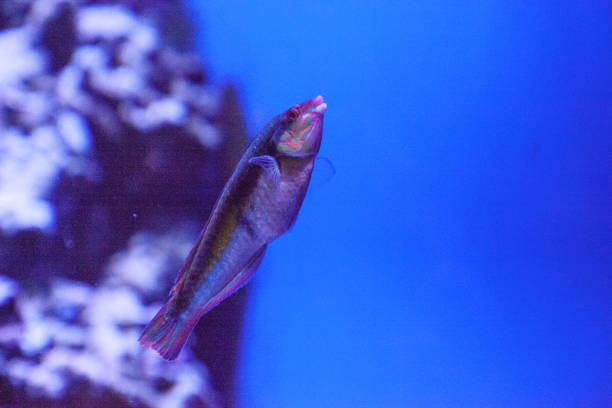
Halichoeres Hortulanus Pictures, Images and Stock Photos
Browse 100+ halichoeres hortulanus stock photos and images available, or start a new search to explore more stock photos and images.

Marble wrasse Halichoeres hortulanus swims along a coral reef.
Marble wrasse Halichoeres hortulanus swims along a coral reef.
Checkered wrasse Halichoeres hortulanus swims above a coral reef in a marine aquarium
A wrasse and some parrotfish feeding on sand at dusk
Checkerboard wrasse (Halichoeres hortulanus) undersea, Red Sea, Egypt, Sinai, Ras Mohammad national park
Checkerboard wrasse (Halichoeres hortulanus) undersea, Red Sea, Egypt, Sinai, Ras Mohammad national park
Checkerboard wrasse (Halichoeres hortulanus) undersea, Red Sea, Egypt, Sinai, Ras Mohammad national park
Checkerboard wrasse (Halichoeres hortulanus) undersea, Red Sea, Egypt, Sinai, Ras Mohammad national park
Checkerboard wrasse (Halichoeres hortulanus) undersea, Red Sea, Egypt, Sinai, Ras Mohammad national park
Checkerboard wrasse (Halichoeres hortulanus) undersea, Red Sea, Egypt, Sinai, Ras Mohammad national park
Checkerboard wrasse (Halichoeres hortulanus) undersea, Red Sea, Egypt, Sinai, Ras Mohammad national park
Checkerboard wrasse (Halichoeres hortulanus) undersea, Red Sea, Egypt, Sinai, Ras Mohammad national park
Checkerboard wrasse (Halichoeres hortulanus) undersea, Red Sea, Egypt, Sharm El Sheikh, Nabq Bay
Checkerboard wrasse (Halichoeres hortulanus) undersea, Red Sea, Egypt, Sharm El Sheikh, Nabq Bay
Mansuar island, Raja Ampat, West Papoua, Indonesia
A colorful checkerboard wrasse swims over a reef in Fiji in search for food.
Checkerboard wrasse (Halichoeres hortulanus). Probably young adult. Red Sea, Egypt. Underwater shot in nature.
Tropical Forsskal goatfish known as Parupeneus forskali and Checkerboard wrasse known as Halichoeres hortulanus underwater on sand sea bottom at the coral reef. Underwater life of reef with corals and tropical fish. Coral Reef at the Red Sea, Egypt.
Tropical Forsskal goatfish known as Parupeneus forskali and Checkerboard wrasse known as Halichoeres hortulanus underwater on sand sea bottom at the coral reef. Underwater life of reef with corals and tropical fish. Coral Reef at the Red Sea, Egypt.
Tropical Forsskal goatfish known as Parupeneus forskali and Checkerboard wrasse known as Halichoeres hortulanus underwater on sand sea bottom at the coral reef. Underwater life of reef with corals and tropical fish. Coral Reef at the Red Sea, Egypt.
Checkerboard Wrasse isolated on white background. Halichoeres hortulanus
Coral reefs are the one of earths most complex ecosystems, containing over 800 species of corals and one million animal and plant species. Here we see a shallow coral reef consisting mainly of hard corals, with a Checkerboard Wrasse (Halichoeres hortulanus) swimming. This coral is showing signs of distress. 75% of the worlds coral reefs are now classed as 'Threatened,' with 60% of most reefs having local damage from anchors, overfishing, coral bleaching (as seen here), disease and pollution.
The juvenile Marble/Hortulanus Wrasse, also known as the Checkerboard Wrasse, is white with stripes, dots, and patches of black. With maturity, it becomes silver with a distinctive black checkerboard pattern on the body. The dorsal fin and tail are yellow, and the face is light green with orange to pink striped markings.
The juvenile Marble/Hortulanus Wrasse, also known as the Checkerboard Wrasse, is white with stripes, dots, and patches of black. With maturity, it becomes silver with a distinctive black checkerboard pattern on the body. The dorsal fin and tail are yellow, and the face is light green with orange to pink striped markings.
Tropical Forsskal goatfish known as Parupeneus forskali and Checkerboard wrasse known as Halichoeres hortulanus underwater on sand sea bottom at the coral reef. Underwater life of reef with corals and tropical fish. Coral Reef at the Red Sea, Egypt.
Tropical Forsskal goatfish known as Parupeneus forskali and Checkerboard wrasse known as Halichoeres hortulanus underwater on sand sea bottom at the coral reef. Underwater life of reef with corals and tropical fish. Coral Reef at the Red Sea, Egypt.
Tropical Forsskal goatfish known as Parupeneus forskali and Checkerboard wrasse known as Halichoeres hortulanus underwater on sand sea bottom at the coral reef. Underwater life of reef with corals and tropical fish. Coral Reef at the Red Sea, Egypt.
Tropical Forsskal goatfish known as Parupeneus forskali and Checkerboard wrasse known as Halichoeres hortulanus underwater on sand sea bottom at the coral reef. Underwater life of reef with corals and tropical fish. Coral Reef at the Red Sea, Egypt.
The juvenile Marble/Hortulanus Wrasse, also known as the Checkerboard Wrasse, is white with stripes, dots, and patches of black. With maturity, it becomes silver with a distinctive black checkerboard pattern on the body. The dorsal fin and tail are yellow, and the face is light green with orange to pink striped markings.
Tropical Forsskal goatfish known as Parupeneus forskali and Checkerboard wrasse known as Halichoeres hortulanus underwater on sand sea bottom at the coral reef. Underwater life of reef with corals and tropical fish. Coral Reef at the Red Sea, Egypt.
The juvenile Marble/Hortulanus Wrasse, also known as the Checkerboard Wrasse, is white with stripes, dots, and patches of black. With maturity, it becomes silver with a distinctive black checkerboard pattern on the body. The dorsal fin and tail are yellow, and the face is light green with orange to pink striped markings.
The juvenile Marble/Hortulanus Wrasse, also known as the Checkerboard Wrasse, is white with stripes, dots, and patches of black. With maturity, it becomes silver with a distinctive black checkerboard pattern on the body. The dorsal fin and tail are yellow, and the face is light green with orange to pink striped markings.
Tropical Checkerboard wrasse known as Halichoeres hortulanus underwater on sand sea bottom at the coral reef. Underwater life of reef with corals and tropical fish. Coral Reef at the Red Sea, Egypt.
Tropical Checkerboard wrasse known as Halichoeres hortulanus underwater on sand sea bottom at the coral reef. Underwater life of reef with corals and tropical fish. Coral Reef at the Red Sea, Egypt.
Tropical Checkerboard wrasse known as Halichoeres hortulanus underwater on sand sea bottom at the coral reef. Underwater life of reef with corals and tropical fish. Coral Reef at the Red Sea, Egypt.
Tropical Checkerboard wrasse known as Halichoeres hortulanus underwater on sand sea bottom at the coral reef. Underwater life of reef with corals and tropical fish. Coral Reef at the Red Sea, Egypt.
The checkerboard wrasse (Halichoeres hortulanus) is a small-sized fish that can reach a maximum length of 27 centimetres (11 in). Both its sex and appearance change during its life, and the colouring at each stage is rather variable based on location. The body is thin, relatively lengthened and its mouth is terminal. At juvenile stage, this wrasse has a white silvery background color with three black and dark red vertical patches from back head, middle of the body and on the caudal peduncle. A black ocellus with a yellow ring adorns the rear of the dorsal fin, two distinctive white spots are also visible on top and bottom of the caudal peduncle. As it matures, the checkerboard wrasse changes its coloration to a silver body with a distinctive black checkerboard pattern on the body. The dorsal fin and tail are yellow, and the face is light green with orange to pink striped markings. The checkerboard wrasse is a predator that feeds mainly on small invertebrates such as crustaceans, molluscs, worms, echinoderms captured on the substrate or in the sand. Like many other wrasses, the checkerboard wrasse is a protogynous hermaphrodite, starting life as a female and later becoming a male, changing sex at maturity when it is about 12.8 cm (5.0 in) long. The checkerboard wrasse is found in tropical marine waters of the Indo-Pacific, from the Red Sea, throughout South-east Asia and Micronesia, north to Japan, south to Australia and east to the Tuamoto Islands. It inhabits sand patches in lagoons, reef slopes surge channels in depths to at least 30 m.
Tropical Checkerboard wrasse known as Halichoeres hortulanus underwater on sand sea bottom at the coral reef. Underwater life of reef with corals and tropical fish. Coral Reef at the Red Sea, Egypt.
